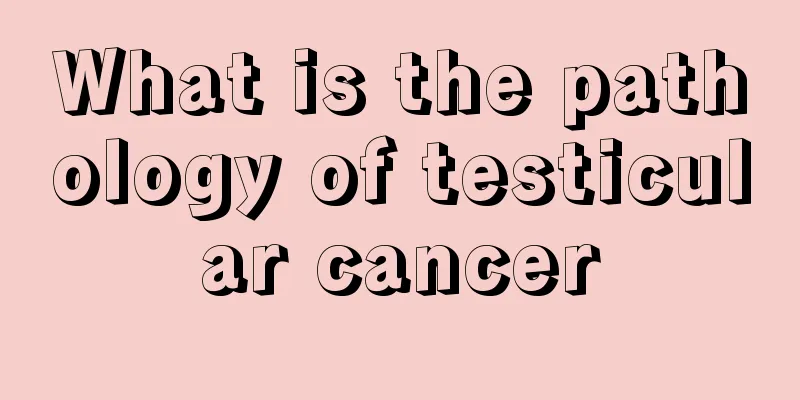What is the pathology of testicular cancer

|
In this era when everyone is afraid of cancer, health is more precious than anything else, because health is priceless. Tumors in the testicles are all malignant. If you are unfortunately diagnosed with testicular cancer, it will be a heavy blow to the patient and his family. Later, let me take you to understand the pathology of testicular cancer. Although many data suggest that the occurrence of testicular tumors may be related to testicular trauma, endocrine disorders, genetics and infection, there is a lack of sufficient evidence. So far, the most convincing relationship is the relationship between incomplete testicular descent (cryptorchidism) and the occurrence of testicular tumors. A large amount of data confirms that the malignant transformation rate of cryptorchidism, especially abdominal cryptorchidism, is much higher than that of normal descended testicles. It is 3 to 14 times the incidence rate of normal people. It is currently believed that factors such as abnormal testicular germ cells, elevated temperature, blood supply disorders, endocrine disorders, and gonadal dysgenesis may be related to the malignant transformation of cryptorchidism. The relationship between cryptorchidism and testicular tumors has attracted the attention of scholars from all over the world, who emphasize that testicular fixation before the age of 6 is an effective measure to prevent cryptorchidism from becoming malignant, and has achieved significant results. The incidence of cryptorchidism in China is similar to that in other countries, but the proportion of cryptorchid tumors is significantly higher than that in other countries, which may be related to the fact that testicular traction fixation has not yet been widely performed on cryptorchid children before school age in China. Testicular tumors are divided into germ cell tumors, non-germ cell tumors and testicular secondary tumors. Germ cell tumors are the most common, accounting for 90% to 95%. Germ cell tumors are divided into seminoma (35%), non-seminoma (embryocarcinoma; teratoma; choriocarcinoma, etc.) and mixed germ cell tumors. Non-germ cell tumors are divided into Leydig cell tumors, Sertoli cell tumors, gonadal stromal tumors, and mixed tumors. Testicular cancer is currently the malignant solid tumor with the highest clinical cure rate. Even for patients with testicular cancer that has metastasized, there is a high chance of clinical cure through surgery and combined radiotherapy and chemotherapy. Therefore, it is important to emphasize that the goal of testicular cancer treatment is to achieve cure, not to alleviate or prolong survival time. |
<<: Which foods can help treat testicular cancer
>>: What are the pathological causes of testicular cancer
Recommend
What are the effects and functions of strawberry crystal
Do you know what strawberry crystal is? Strawberr...
Can early pancreatic cancer be cured?
For this disease, if pancreatic cancer occurs dur...
What are the early symptoms of prostate cancer
Prostate cancer may not have obvious symptoms in ...
How to correctly prevent colorectal cancer
Cancer, I believe many people shudder when hearin...
TC regimen for breast cancer chemotherapy
Breast cancer is a phenomenon in which breast epi...
Does green tea relieve internal heat?
Green tea is a very popular tea beverage. It is p...
What foods can prevent pregnancy?
Many people may not have noticed that there are m...
Can I take a hot spring bath in spring?
In fact, many people like to take a hot spring ba...
Is lung and pancreatic cancer contagious?
In reality, "talking about cancer is a fear&...
The functions and effects of propolis soap
Propolis soap is a kind of handmade soap, which m...
Why do I gain weight even though I eat less?
For people who want to lose weight, the most impo...
How many items are there in thyroid hormone tests
The thyroid gland is an organ in the human body. ...
On which day will I have milk after a caesarean section?
After giving birth, an important task for postpar...
My face feels tight after washing with facial cleanser
The purpose of washing your face with facial clea...
How is fat consumed
Choosing different types of exercise can make fat...









